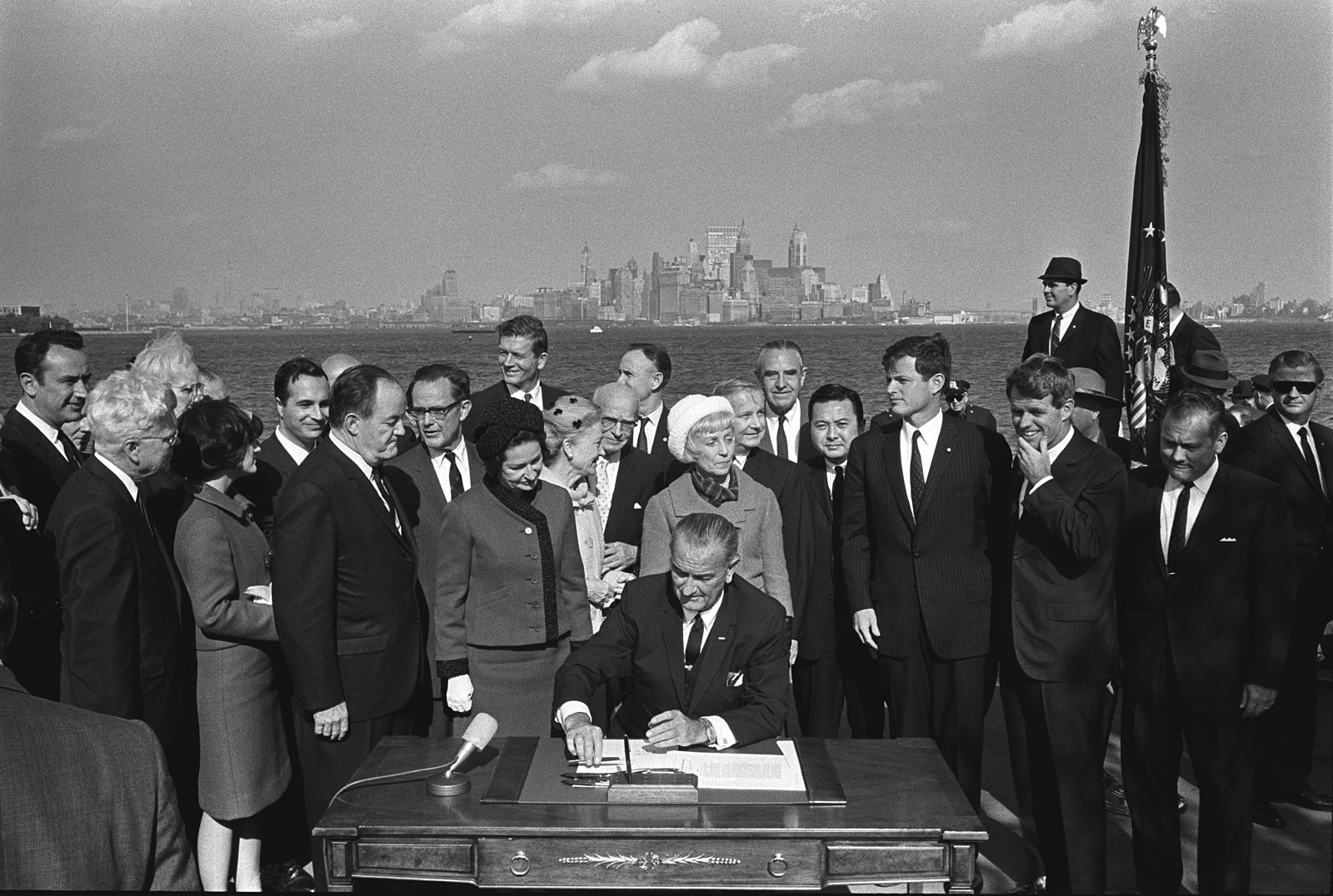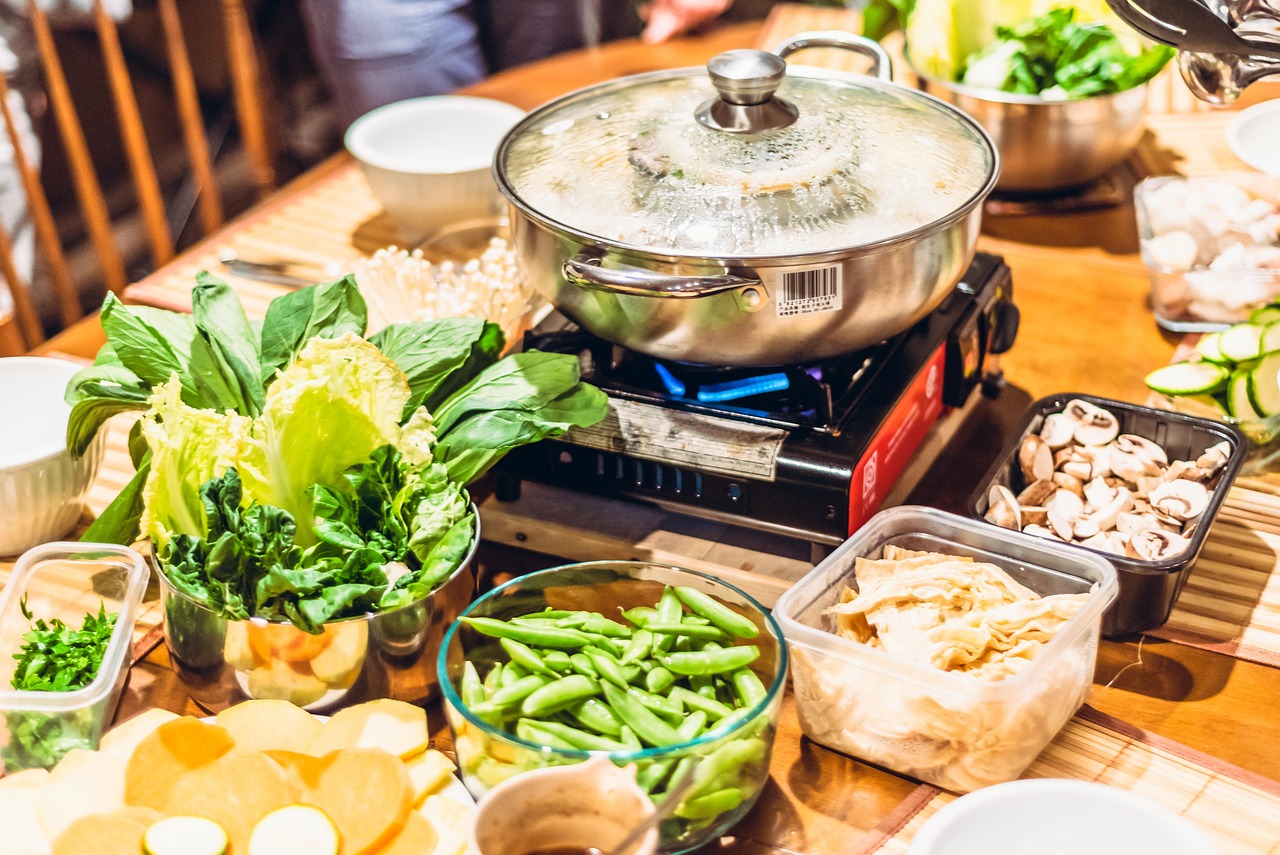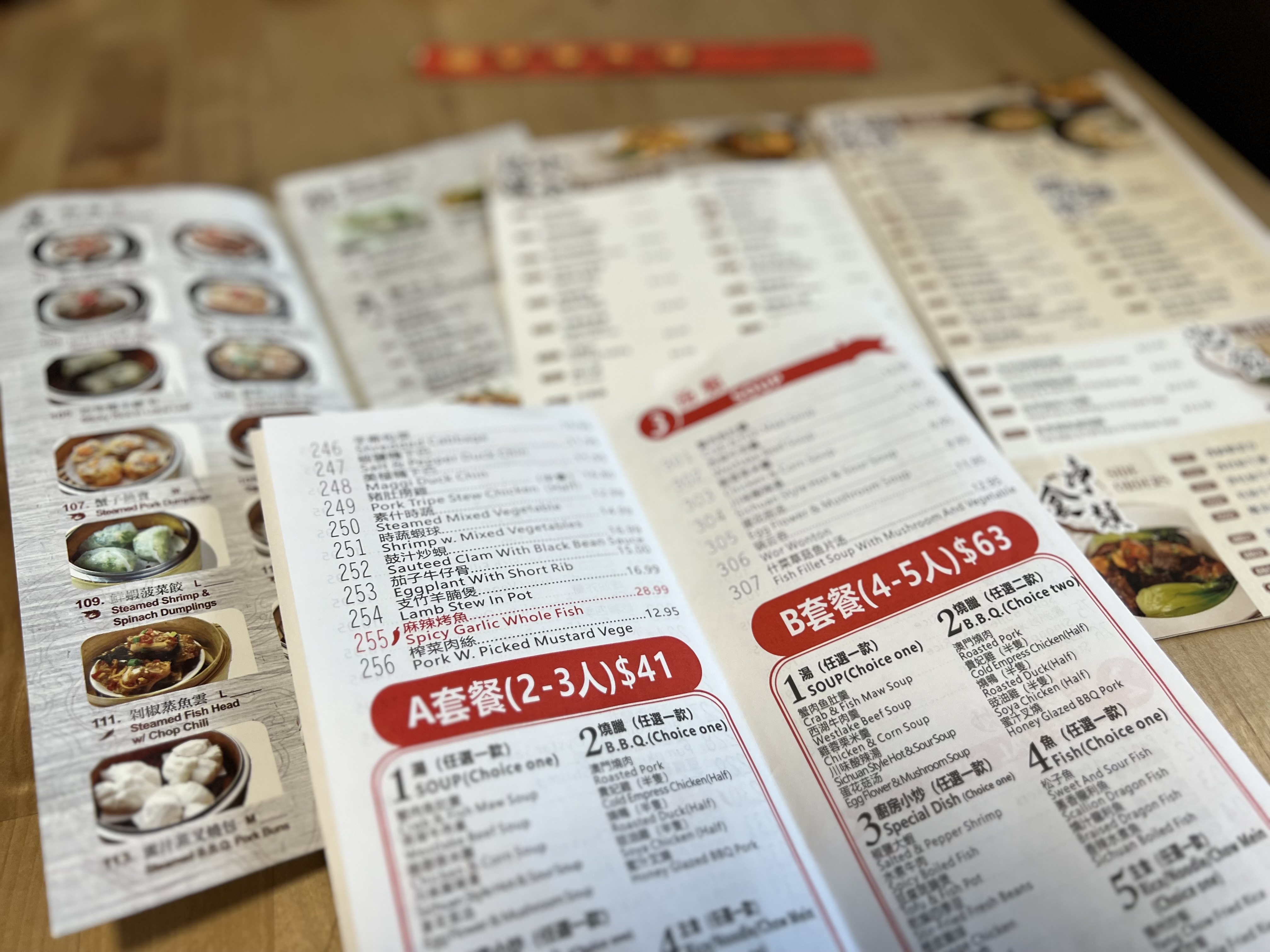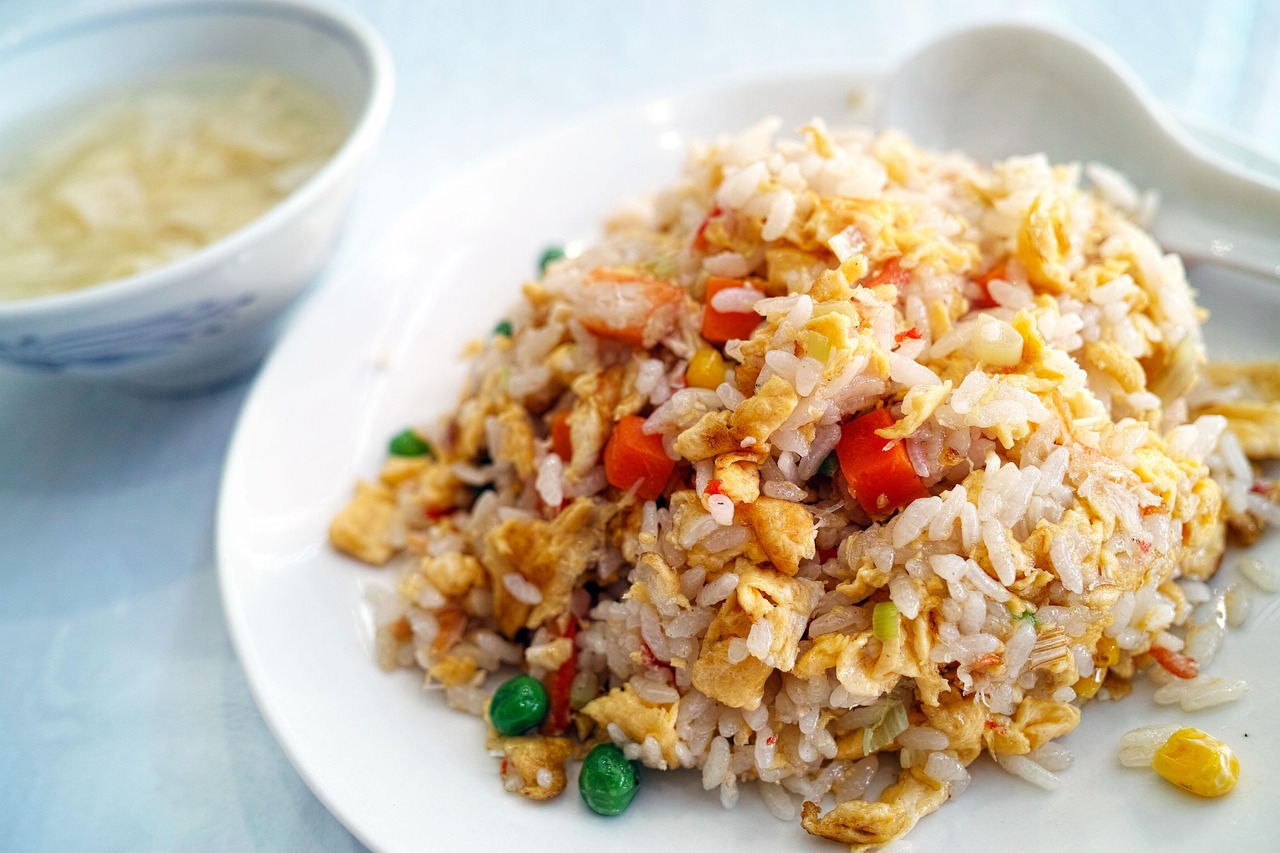6.6.3 - Chinese American Contributions to Food and Cuisine
Lesson Plan to Support Committee of 100's From Foundations to Frontiers:
Chinese American Contributions to the Fabric of America Report
The Asian American Education Project
All content is owned by The Asian American Education Project (AAEdu).
As such, users agree to attribute all work to The Asian American Education Project.
This photograph shows a variety of Chinese dishes. By 2016, the United States had over 45,000 Chinese restaurants in operation.
Credit: “Chinese Food Lunch” by NickyGirly via Pixabay. (Free for use under the
Pixabay Content License)
Source
Grade: 6-9Subject:
History, Social Science, English Language Arts
Number of Lessons/Activities: 4 + Extension Activities
In this lesson, students will learn about the contributions of Chinese immigrants to American food and cuisine. Students will explore the history of Chinese food in America and learn how immigration policies have impacted the diversity and expansiveness of Chinese food and restaurants in the United States. Students will research influential Chinese American chefs and/or different regional styles of Chinese food.
Students will:
- Describe the contributions of Chinese Americans to American food and cuisine
- Explain how immigration policies impacted Chinese cuisine and restaurants in the United States
Chinese American Contributions to Food and Cuisine Essay:
Chinese food is very popular in the United States. It is part of the American national
cuisine.
Chinese
immigrants began to arrive in large numbers in the mid-1800s. At that time, the United States had little cuisine of its own. It didn’t have a national food identity. This differed from China. China had centuries of experience in
hospitality. The Chinese had their own dishes. They had their own eating and serving practices. Chinese immigrants brought over their skills and knowledge.
As such, the best restaurants of the era were Chinese-owned. In the 20th century,
Chop Suey became popular. Chop Suey translates to “odds and ends.” It is a distinctly Chinese American dish. It consists of stir-fried meat, eggs, and vegetables. It is often served with rice and soy sauce. Experts believe it was invented by Chinese immigrant cooks working on the railroads.
As Chinese immigrants settled, Chop Suey
joints popped up. They were cheap. They became popular with young folks living in the city. Food at such restaurants evolved as a
fusion of Chinese and American tastes. Chinese chefs in the United States adapted their flavors, ingredients, and cooking methods. They accommodated their new kitchens and customers.
U.S.
migration laws changed. Previous bans and restrictions were lifted. For example, in 1943, the United States
revoked the Chinese Exclusion Act. This Act was
discriminatory. It severely restricted Chinese immigration for 60 years. The 1965 Immigration and Nationality Act further opened immigration pathways. This Act allowed more people to immigrate. Asian immigration to the United States increased. Chinese workers,
entrepreneurs, and students immigrated. This expanded Chinese cuisine in the United States.
In the 1950s-70s, the majority of Chinese immigrants were from Hong Kong and Taiwan. In 1979, the United States and China restored
diplomatic ties. The number of Chinese immigrants grew significantly. Such policy changes led to a more diverse range of Chinese cuisine styles. This included Hunan, Sichuan, Taipei and Shanghai. These are all regions in China.
The shift from exclusive to more inclusive immigration
legislation also led to the arrival of more skilled Chinese chefs. More Chinese restaurants emerged in cities with large Chinese populations. This included New York City and San Francisco.
By 2016, the United States had over 45,000 Chinese restaurants in operation. This is greater than the combined number of McDonald’s, KFC, Pizza Hut, Taco Bell and Wendy’s restaurants. By 2018, one in 25 chefs and head cooks in the United States was Chinese American. A
commentator said there is “nothing so all-American as Chinese food.”
*This text is an excerpt from the Committee of 100’s report entitled, “From Foundations to Frontiers: Chinese American Contributions to the Fabric of America.” It has been adapted for reading accessibility and clarity.
- Chop suey: an American Chinese dish consisting of meat and eggs, cooked quickly with vegetables and bound in a starch-thickened sauce
- Commentator: a person who comments on events or on a text
- Cuisine: a style or method of cooking, especially as characteristic of a particular country or region
- Diplomatic ties: formal relations between the governments of different countries
- Discriminatory: unjust treatment based on differences, especially categories such as ethnicity, age, sex, or disability
- Entrepreneur: someone who organizes, manages, and takes on the risks of a business in order to eventually make a profit
- Fusion: a merging of distinct elements into a whole; food prepared using techniques and ingredients of two or more ethnic or regional cuisines
- Hospitality: the business or practice of providing services to guests in hotels, restaurants, bars, etc.
- Immigrant: a person who comes to a country to live permanently
- Joints: places like restaurants, bars, or dance halls
- Legislation: laws created by the government
- Migration: movement from one area to another
- Revoke: to take back
- How did the early United States and China differ in regard to hospitality?
- What is Chop Suey?
- How and why did Chinese Americans create food that was a fusion of Chinese and American cultures, tastes, traditions, etc?
- How did immigration policies impact Chinese food and cuisine in the United States?
Fried rice is commonly found in Chinese American restaurants.
In Activity 1, students consider words or phrases that come to mind when they think of “American food” and “Chinese food.”
Credit: “Fried rice, Chinese cuisine, Food” by takedahrs via Pixabay. (Free for use under the
Pixabay Content License)
Source
Activity 1: Concept Mapping Chinese Food and American Food (Suggested Time: 20 minutes)
- Distribute the worksheet entitled, “Concept Map: American Food.” Have students create a concept map of words or phrases that come to mind when they think of “American food.” (Option: Have students enter words into an online tool like Mentimeter to generate a collective word cloud.)
- Distribute the worksheet entitled, “Concept Map: Chinese Food.” Have students create a concept map of words or phrases that come to mind when they think of “Chinese food.”
- Have students compare and contrast the concept maps. First, have them identify similarities and discuss what accounts for these similarities. Then, have them identify differences and discuss what accounts for these differences.
- Have students complete a Quickwrite answering this prompt: “Describe the last time you ate Chinese food. Did you like it? Why or why not?” Facilitate a discussion about student responses to the Quickwrite.
- Tell students: “The Chinese food that you eat is more American than Chinese. We will learn more about Chinese American cuisine in this lesson.”

In 1965, President Lyndon B. Johnson signed the Immigration and Nationality Act, opening a more inclusive era of immigration policies.
Chinese immigration increased, leading to an expansion of Chinese cuisine in the United States.
Credit: LBJ Library photo by Yoichi Okamoto, Public domain, via
Wikimedia Commons Source
Activity 2: Understanding Chinese American Contributions to Food and Cuisine (Suggested time: 60 minutes)
- Have students read the essay. Consider the following options:
- OPTION 1: Have students read the essay independently either for homework or during class time.
- OPTION 2: Read aloud the essay and model annotating.
- OPTION 3: Have students read aloud in pairs or small groups.
- Facilitate a class discussion by asking the following questions:
- How did the early United States and China differ in regard to hospitality?
- What is Chop Suey?
- How and why did Chinese Americans create food that was a fusion of Chinese and American cultures, tastes, traditions, etc?
- How did immigration policies impact Chinese food and cuisine in the United States?
- Repeat and display the first couple of sentences: “Chinese food is very popular in the United States. It is part of the American national cuisine.” Unpack this sentence with students by asking:
- What do these sentences mean?
- In what ways do you agree with it?
- In what ways do you disagree with it?
- What was the author’s intent in writing this sentence? How does it support the claim being made in the text?
- Repeat and display the last sentence: “...there is ‘nothing so all-American as Chinese food.’” Unpack this sentence with students by asking:
- What does this sentence mean?
- How does it relate to the first sentence?
- What is the difference between Chinese food and Chinese American food?
- What does “all-American” mean? How is Chinese food “all-American”?
- Have students identify the factors that may have contributed to the growth of Chinese food and cuisine in the United States. Encourage students to annotate the text and mark the factors.
- Have students work in small groups and assign each group to a factor. Factors may include:
- Little American cuisine existed when Chinese began to arrive.
- Chinese people have had centuries of experience in hospitality.
- The Chinese Exclusion Act was revoked in 1943.
- The Immigration and Nationality Act in 1965 increased Chinese immigration.
- There was a restoration of diplomatic ties with China in 1979.
- More Chinese restaurants opened in cities with large Chinese populations.
- Have each group conduct research and create a poster including the following information about each factor:
- What is it? What does it mean?
- What is the historical background?
- What is the impact on Chinese cuisine in the United States?
- Have students post their posters around the room and host a Gallery Walk where all students are given time to read all the posters. Then, facilitate a discussion by asking the following questions:
- What did you learn?
- How and why did Chinese cuisine get established in the United States?

Hot pot is one of many styles of Chinese cuisine that Chinese immigrants have introduced to the United States.
Credit: “Hot pot, Table, Veggies” by lsachelny via Pixabay. (Free for use under the
Pixabay Content License) Source
Activity 3: Researching Chinese Cuisine and Chefs (Suggested time per Option: 60 minutes)
Teachers can have students complete one or more of the following options:
- OPTION 1: Have students work in small groups. Assign each group to research an influential Chinese American chef (Examples: Martin Yan, Susanna Foo, Cecilia Chiang, Joyce Chen, Ming Tsai, Eddie Huang, Peter Chang, Kathy Fang etc...). Have students create an infographic about the chef including the following information:
- Image
- Year and Place of birth
- Year of death
- Background (childhood, education, work experience)
- Major accomplishments
- Notable restaurants or dishes
- Obstacles
- Impact on Chinese American food culture
- OPTION 2: Have students work in small groups. Assign each group to research a different style of Chinese cuisine: Hunanese, Shanghainese, Taiwanese, Cantonese, or Sichuan. Have students create an infographic about the cuisine style including the following information:
- Map of the region
- Description of the style of food
- Common ingredients
- Popular dishes (including images if possible)
- Restaurants of this cuisine
- History of this cuisine in the United States
- Impacts by American culture
- OPTION 3: Have students read a menu from a local Chinese restaurant. Assign each student to research a specific dish. Have each student create an infographic about the dish including the following information:
- Image
- Ingredients
- Cooking instructions
- History of dish
- Cultures or traditions of dish (if applicable)
- Influences from Chinese culture
- Influences from American culture

In Activity 4, students may use cutouts from takeout menus to create a zine about Chinese food.
Photo by Ashley Chu (Free Use)
Activity 4: Creating a Chinese Food Zine (Suggested time: 60 minutes)
- Have students (either working independently or in small groups) create a zine summarizing what they learned about Chinese contributions to American food and cuisine. Tell students that a zine (short for magazine) is a self-published work that includes text and images. Have students do the following:
- Design a cover.
- Create a Table of Contents. (Require students to cover 3-5 topics that address the history of Chinese food in the United States, the impact of immigration policies, etc.)
- Write content and draw images for 3-5 topics.
- Tell students to use information from the text or from their own research from Activity 3 in their zines. Encourage students to include cutouts from takeout menus, coupons, food packaging from local Chinese restaurants, etc.
Extension Activities (Suggested time per Option: 30- 60 minutes)
- Have students interview a local Chinese restaurant owner or chef and learn about their story. Remind students to patron the restaurant and recommend it to others as a form of gratitude. Have students create an advertisement (i.e., social media posting or reel, short article, flyer, etc.) to promote the restaurant.
- Have students split into three groups, and have each group watch one part of the Al Jazeera series entitled, “Chinese Food: An All-American Cuisine”. Have students summarize the video and present key points or interesting facts from the video to the whole group:
- Part 1:
How Chop Suey Saved San Francisco's Chinatown
- Part 2:
The Untold Story Of America's Southern Chinese
- Part 3:
Inside The Chinese Food Mecca Of Los Angeles
- Have students learn about the history of Jewish people and Chinese food on Christmas day by reading “Nothing Is More American Than Chinese Food on Christmas” and/or “Why Do Jewish People Eat Chinese Food On Christmas?” Have students explain how this “tradition” began and what it says about Chinese cuisine’s place in Jewish American culture.
- Have students research the history of uniquely Chinese American dishes, or “American Chinese” dishes, such as Chop Suey, General Tso’s chicken, beef and broccoli, and egg foo young. Consider questions such as: Why or how do you think these dishes emerged? What do the popularity of these dishes tell you about the influence of Chinese cooking on American cuisine? What are some factors that have led to the creation of these dishes? (Optional readings: American-Chinese food is real Chinese food and/or ‘Not Real Chinese’: Why American Chinese Food Deserves Our Respect.)
- Have students interrogate the term “authentic” when it comes to food. Ask questions such as: What does this word mean? Who has the authority to determine what is or is not “authentic?” Have students research this topic online and compare different ideas on how this term is used. (Optional readings: On The Hunt For 'Authentic Ethnic Food'? Be Careful Who You Ask.)
- Have students read the “Time” article entitled, “A Very Brief History of Chinese Food in America.” Have students create a timeline to summarize the article. And/or have students create a comic strip panel about the most significant historical milestones or factors.
- Have students use Yelp or Google to find a list of restaurants within a 25-mile radius of the school and have students identify the Chinese restaurants. Have students create a graph (i.e., bar graph, pie chart, etc.) to present their findings and to help tell a story of the cuisine in your local community.
- Have students research Panda Express. Have students study the timeline of their family story. (Option: Host a Panda Express lunch!) Facilitate a discussion where students identify the three most significant milestones. Have students create a timeline with visuals and captions of a beloved family dish from their own home.
- Have students identify food examples of Chinese and American fusion. Have students identify other examples of cultural food fusion. Have students invent their own food fusion combining their culture with another culture. Have students make the dish and encourage them to engage in trial and error to get the right taste, etc.
- Have students study the phenomenon of Chinese kids working in their parents’ Chinese restaurants. Have students conduct a google search to find relevant articles and/or videos. Have students select one article to summarize.
Additional Fictional Resources
- A Place at the Table by Saadia Faruqi and Laura Shovan (Clarion Books, 2022) - Have students discuss the role of food in Sara and Elizabeth’s friendship. Have students discuss the symbolism of the characters creating a fusion dish that blends their Pakistani/Muslim and English/Jewish cultures. Have students make connections to the early Chinese American chefs who created fusion dishes. Have students explore fusion dishes across immigrant communities and create a page for a class cookbook explaining the dish.
- Chinese Menu: The History, Myths, and Legends Behind Your Favorite Foods by Grace Lin (Little, Brown Books for Young Readers, 2023) - Have students browse the table of contents and choose a few stories to read. Have students discuss the importance of legends, myths, and histories in telling the stories of Chinese American food. Have students share or research stories about food from other cultures.
- Maizy Chen’s Last Chance by Lisa Yee (Yearling, 2023) - Have students contextualize Maizy’s family’s immigration story using the parts of the lesson essay on the history of Chinese immigration. Have students compare and contrast The Golden Palace to Chinese restaurants learned about or researched in the lesson. Discuss what the restaurant represents for Maizy’s family.
- Measuring Up by Lily Lamotte and Ann Xu (HarperAlley, 2020) - Have students discuss the role of food in Cici’s identity as a Taiwanese American and an immigrant. Have students create a recipe based on one of the featured ingredients in the cooking competition. Have students evaluate how the graphic novel format contributes to this story.





